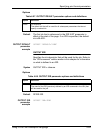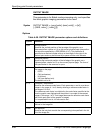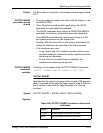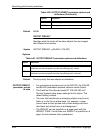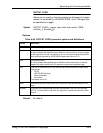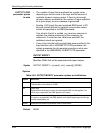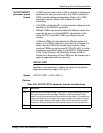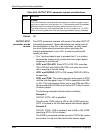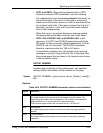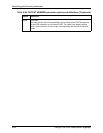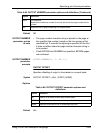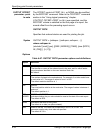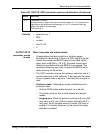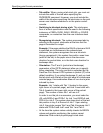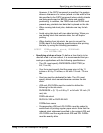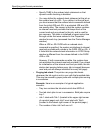
Specifying print format parameters
Using LCDS Print Description Language 4-67
• NTO1 and OSTK: When printing ordered stock in NTO1
sequence using the OSTK parameter, note the following:
The ordered stock must be reverse collated in the feeder so
that the first sheet of the set is on the bottom, the second
sheet next to the bottom, and so on, with the last sheet of the
set on top to be fed first. If the report is larger than the N to 1
threshold, it prints in 1 to N order, and the reverse collated
stock is then inappropriate.
When this occurs, the system displays a message stating
that page ordering has been reversed, and cycles down.
• NTO1= NO, FACEUP= NO, and DUPLEX= NO: In this
sequence, the NTO1 and FACEUP parameters specify the
NO option so other potentially affected parameters, such as
DUPLEX, are not overridden. The DUPLEX parameter,
therefore, maintains either the YES or NO option.
If hierarchical overrides occur, the system issues warning
messages in the xjdc listing when the JSL is compiled, then
forces parameters that are lower in the hierarchical structure
to their workable values.
OUTPUT NUMBER
Invokes page numbering on the printed report, and specifies
starting number and location of the numbers on the page.
Syntax OUTPUT NUMBER = {(pnum, lnum, cnum [, [findex] [, inkref]]) |
NO}
Options
Table 4-65. OUTPUT NUMBER parameter options and definitions
Option Definition
pnum page number
An integer specifying the number with which page numbering starts. The
beginning page number may be nonpositive. The number is incremented at
page transitions but is not printed until it becomes positive.
The maximum page number that can be printed is 2,147,483,647.
lnum line number.
An integer specifying the number of the line on which the page number is
placed.
cnum column number.
An integer specifying the ending column number for the page numbering
sequence.



